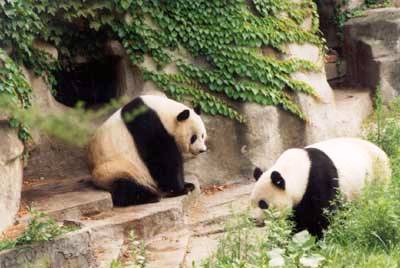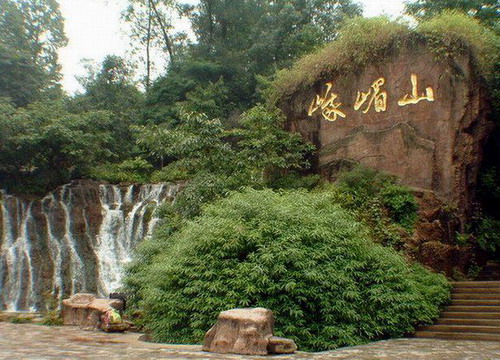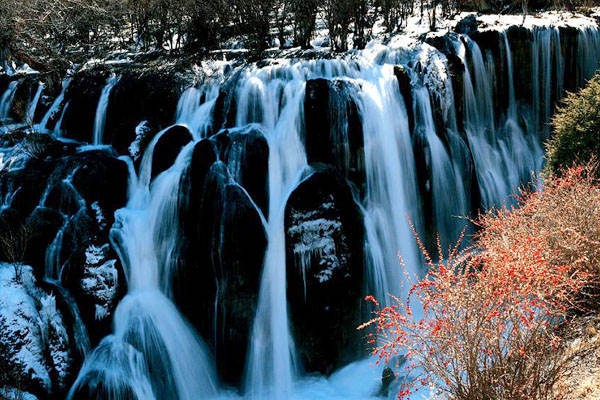Dege

Resting in a valley with Chola Mountain to the east and the Tibetan border to the west, Dege is steeped in living tradtion and sees little of the distant, outside world, other than the truckers and few travelers who pass through. The village is mainly a Tibetan town.
Getting to Dege is a long haul. En route you'll see the towering snowy peaks of Chola Mountain strectching up 6168 m. and the Xinhua Glacier which comes down almost to the road at 4100 m. Chola Mountain itself was first scaled in 1988 and you might begin to wonder if your bus driver is attempting the same as the bus grumbles and inches its way uphill to the top of the peaks. At the Tro La (Chola) Pass of nearly 6000 m, Tibetans on board will throw colored prayer papers out the window and chant something that you can only hope will carry your bus to safety.
While the views from here are phenomenal, conditions can be treacherous on this narrow, ice-encrusted dirt road and it's a toss up as to whether you'll be more frozen from the icy blacts or fear.
Bakong Scripture Printing Lamasery
At the heart of Dege is this lamasery (admission fee RMB 25). While the present structure dates from 1744, the printing houses has existed on this site for over 270 years with printing blocks dating from the early 18 th century. The lamasery currently houses over 217,000 engraved blocks of Tibetan scriptures from the five Tibetan Buddhist sects, including Bon. Texts include ancient works on astronomy, geography, music, medicine and Buddhist classics. A history of Indian Buddhism, comprising 555 woodblock plates, is the only surviving copy in the world (writing in Hindi, Sanskrit and Tibetan). 
Built in the Qing Dynasty by the 42 nd prefect of Dege, the lamasery is revered as one of the three most important Tibetan lamaseries (along with Sakya Monastery and Lhasa's Potala Palace) - not surprising when you consider that the material stored in Dege makes up an estimated 70% of Tibet's literary heritage.
Within the lamasery, hundreds of workers hand-produce over 2500 prints each day. A visit will give you the opportunity to witness this rare sight as ink, paper and brushes fly through the workers' hands at lightning speed. Upstairs, an older crowd of printers produce larger prints of Tibetan gods on paper or colored cloth that later find their way to hills and temples as prayer flags. If you catch them with a free moment, they'll print you one of your choice for RMB 10.
You can also examine storage chambers, paper cutting and binding rooms and the main hall of the lamasery itself. Protecting the monastery from fire and earthquake is a guardian Goddess, a green Avalokiteshavra (Guanyin).
The entrance fee to the lamasery includes a tour guide who is excellent at communicating through pictures if your Chinese isn't up to scratch. The lamasery is closed on holidays.
There are three other lamaseries in town, including a large one just behind the printing house, which is over 1000 years old.





